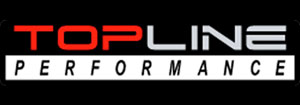It’s important to acknowledge that, and to trust that working together will lead to the best solution..
In one instance, Bryden Wood were asked to design a factory.They observed that workers had to wear heavy personal protective equipment (PPE) to enter a certain room.

They asked themselves, ‘What if we imagined a scenario in which we didn’t need the chemical that makes the PPE necessary?’ Although it was beyond the scope of construction, they realised that wearing PPE for eight hours a day is hot and difficult, uncomfortable and inefficient, at odds with the values of the enterprise.In the end everyone agreed that it would be ideal to eliminate the hazardous chemical.This focus on the workers’ experience typifies the comprehensive and multifaceted approach of Design to Value.

Conversing and collaborating to the point where imagination expands is the work of Design to Value..The process must be evolutionary – you have to have conversations and see where they take you.

This stands in stark contrast to the way most firms operate today with a set process and series of protocols, and a very clear agreement on stage gates and deliverables.
In Design to Value, design phases are described by broad questions documented into the problem statement and value drivers.The facility needed to represent best practice in GMP (good manufacturing practice) and digital automation while remaining cost effective to build and operate.. Bryden Wood was engaged to review and optimise a previously developed concept design for the site’s dry processing (milling and sieving) building.
We worked closely with client stakeholders to analyse the root process requirements, identify over-provisions in the proposed design, and consolidate production onto less equipment.. Capturing these root requirements in 3D digital models called.“Chips” (sets of interacting components.
allowed us to rapidly evaluate a wide range of configuration options with client stakeholders engaged every step of the way..The reduced equipment requirements allowed us to pivot away from the originally proposed central spine corridor towards a simpler configuration of process rooms with perimeter circulation on both sides.
